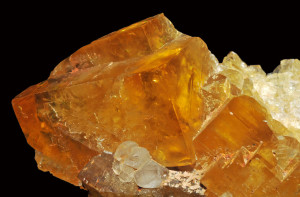
The truth about fluoride in tea (and water) is a topic too important to ignore. Tea consumption used to be something I would limit solely based on daily caffeine intake. Nowadays, I take fluoride content into consideration as well.
What is fluoride?
Fluoride is a mineral that is used to prevent tooth decay; however, the effectiveness of ingesting it, as opposed to applying it orally, appears to be up for debate. Too much fluoride exposure over time can lead to a condition known as skeletal fluorosis in which teeth and bones become damaged.
Fluoride in Tea
The tea plant absorbs fluoride through the soil. The longer the tea leaves are allowed to grow, the more fluoride will be absorbed. That means that white and green tea, which are made from younger leaves, will generally contain lower levels of fluoride than black tea.
Tea does contain antioxidants which can counter fluoride toxicity. Antioxidant levels are higher in younger tea leaves, making white, green and oolong teas more attractive from a wellness standpoint.
Should I Be Concerned about Fluoride in Tea?
Probably not. Most US and UK tea drinkers, including the black tea drinkers among us, don’t have anything to worry about if we remember one key word: moderation.
Fluorosis is mostly a problem in countries that have high levels of fluoride in the water supply. Even in the US where water fluoridation still occurs in many municipalities, cases are rare.
A recent study by researchers from from the University of Derby and Public Health England found a case of a US woman with bone damage caused by fluorosis. She was reported to have consumed a gallon of tea daily since the age of 12 (the article does not state her age now).
How Much Tea is Safe to Consume?
Let’s do the math. Depending on the method used to measure the fluoride level, teas can contain anywhere from 5–9 milligrams (mg) of fluoride per liter of black tea. One liter equals approximately 4 cups or 34 ounces (oz). So, conservatively speaking, one cup of tea (8oz) can have slightly more than 2mg of fluoride. Most of us prepare and drink tea from 11oz mugs, but I’m not certain on what effect that has on the fluoride content.
US experts recommend 4mg of fluoride per day with an upper limit of 10mg. As I interpret this information, 1–3 cups of black tea per day should be safe for adults. I typically enjoy 1–2 cups (mugs) per day, occasionally sneaking in a third. Stay below the upper limit (if what these experts say is true), and you should be okay.
Ways for Tea Drinkers to Reduce Fluoride Intake
- Use filtered water if your city fluoridates your water — reverse osmosis, deionizers and activated alumina are three types of filters that significantly reduce fluoride in water
- Drink teas, such as white, green and oolong, made from younger leaves
- Choose higher quality or brand-name teas over inexpensive, store-brand teas
Otherwise, enjoy tea in moderation and don’t worry.
Sources:

The “US experts” you refer to are experts only in propaganda. Fluoride is not a nutrient, so recommending a particular dose is a sham. There is also no way that 10 mg per day, or even 4 mg per day, is safe over a lifetime.
http://forcedfluoridationfreedomfighters.com/a-preliminary-investigation-into-fluoride-accumulation-in-bone/